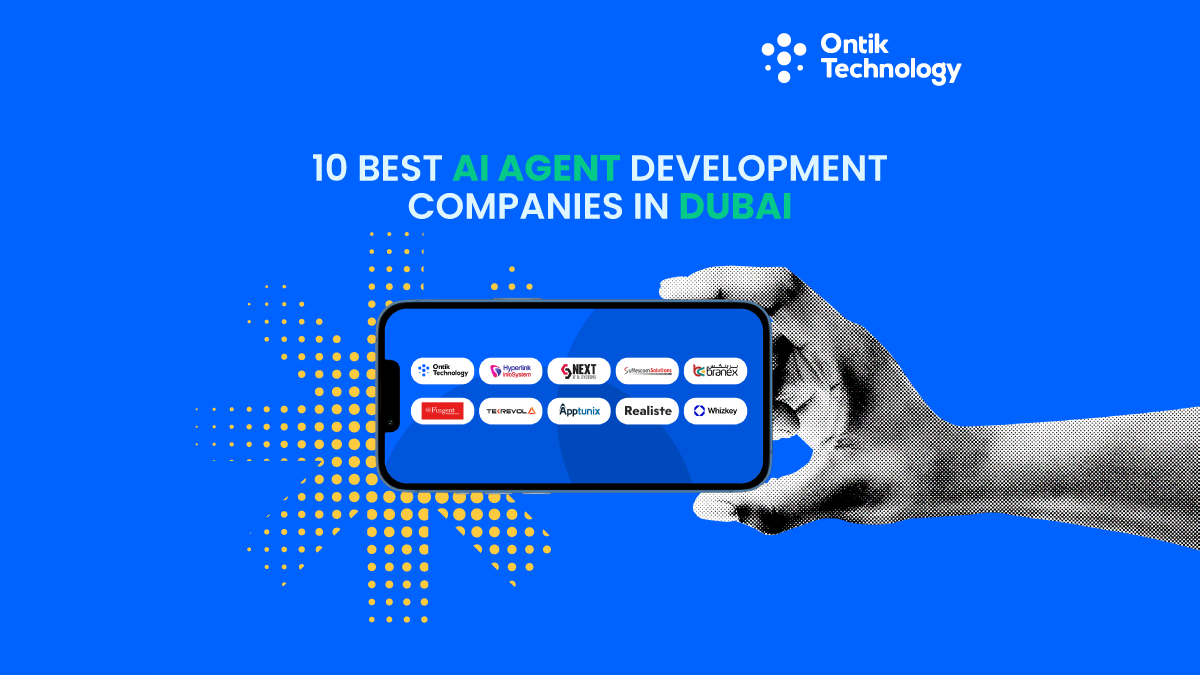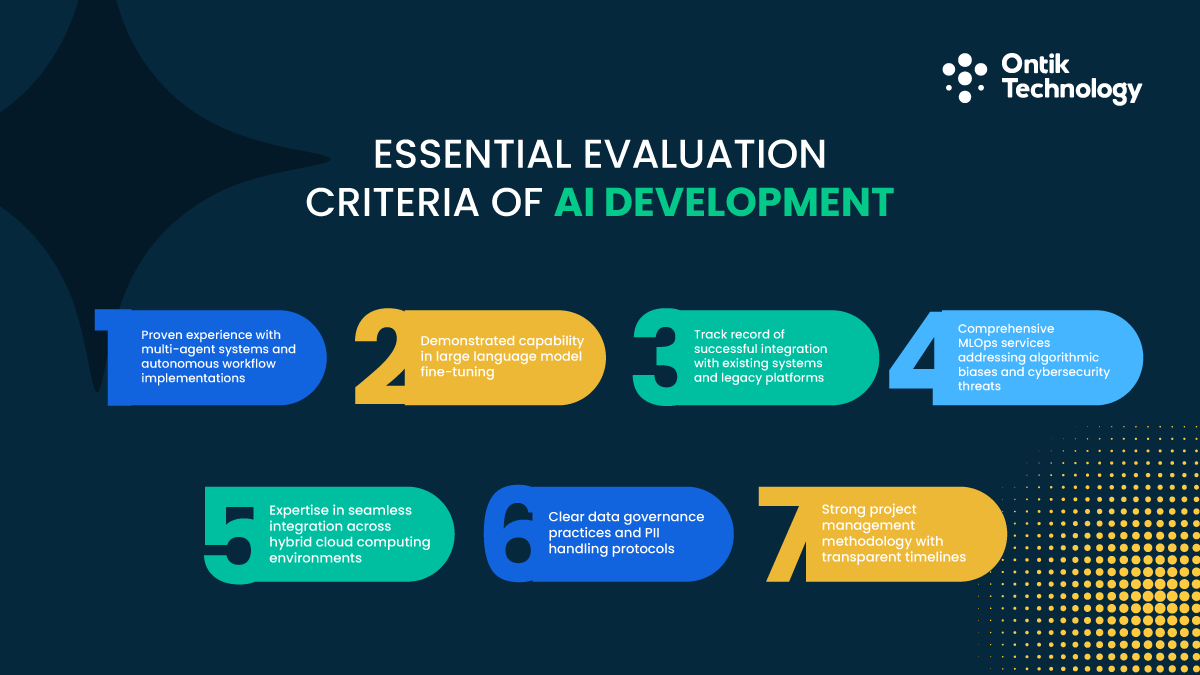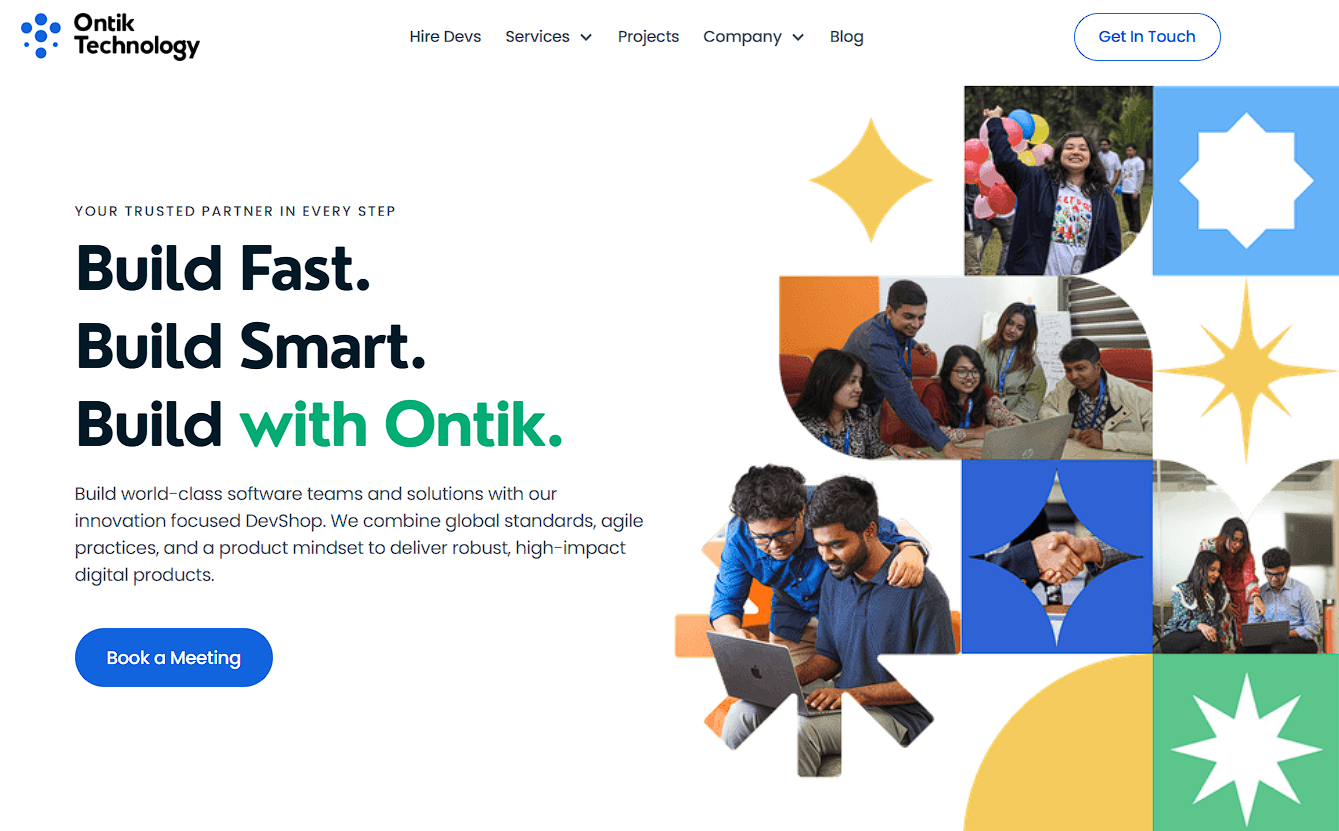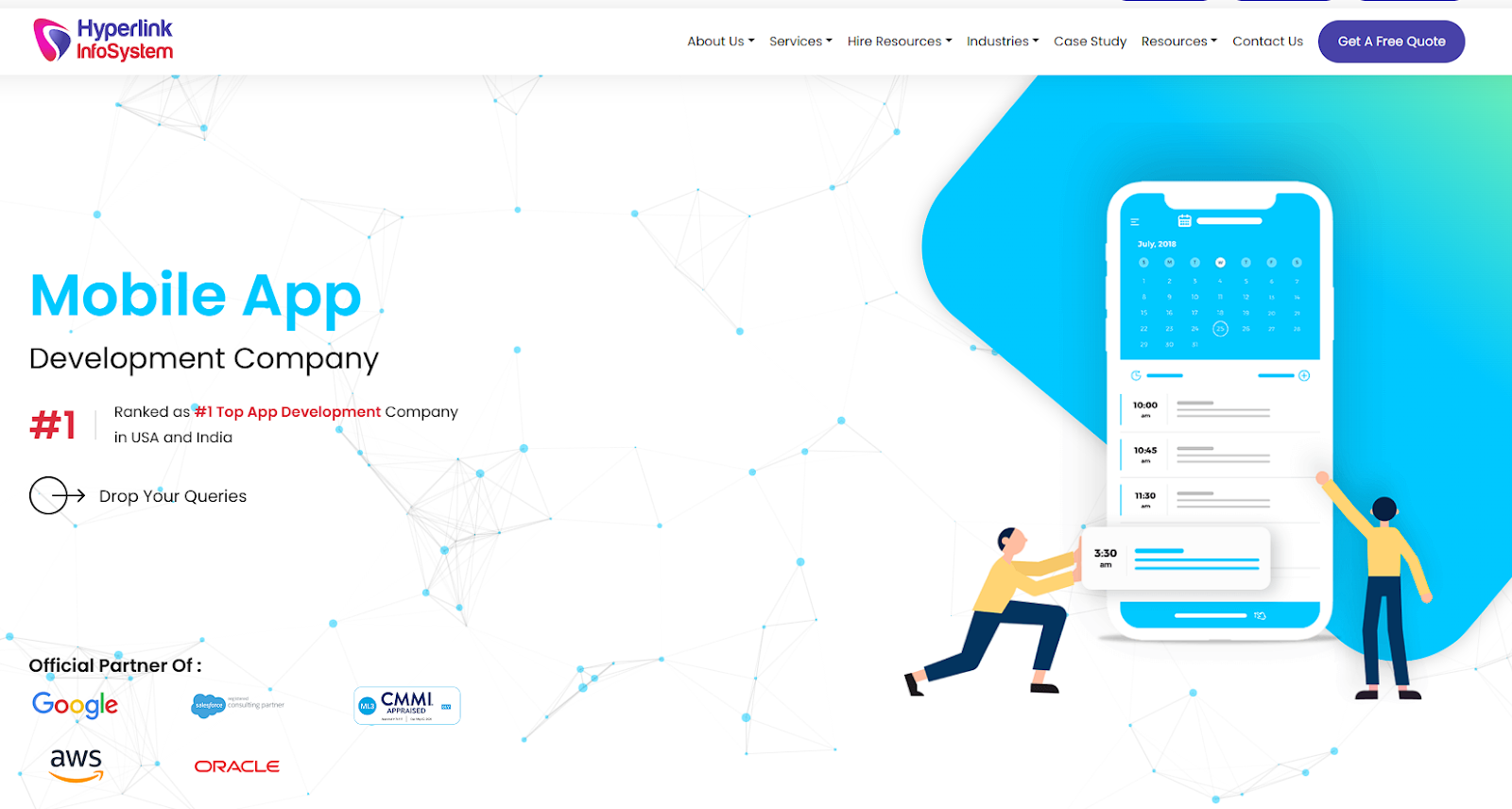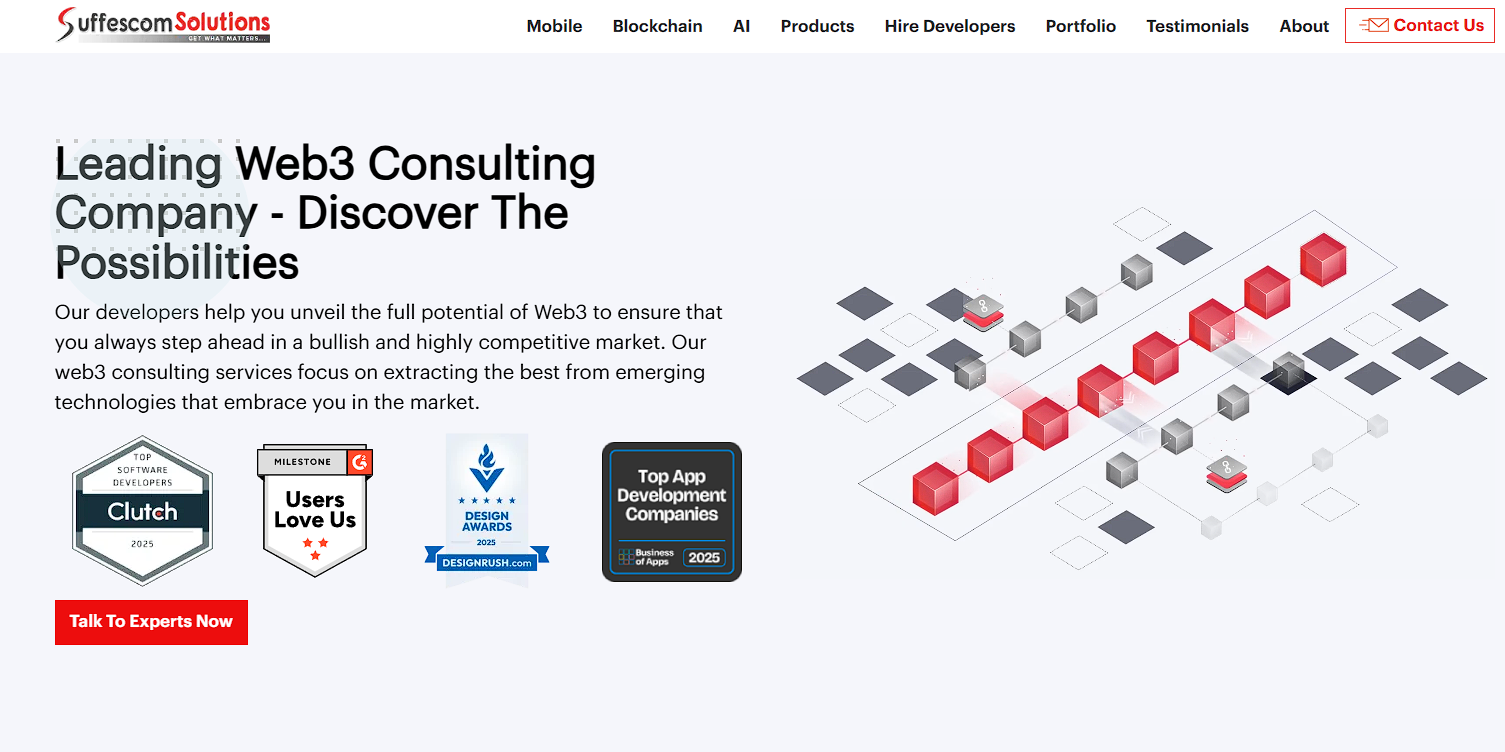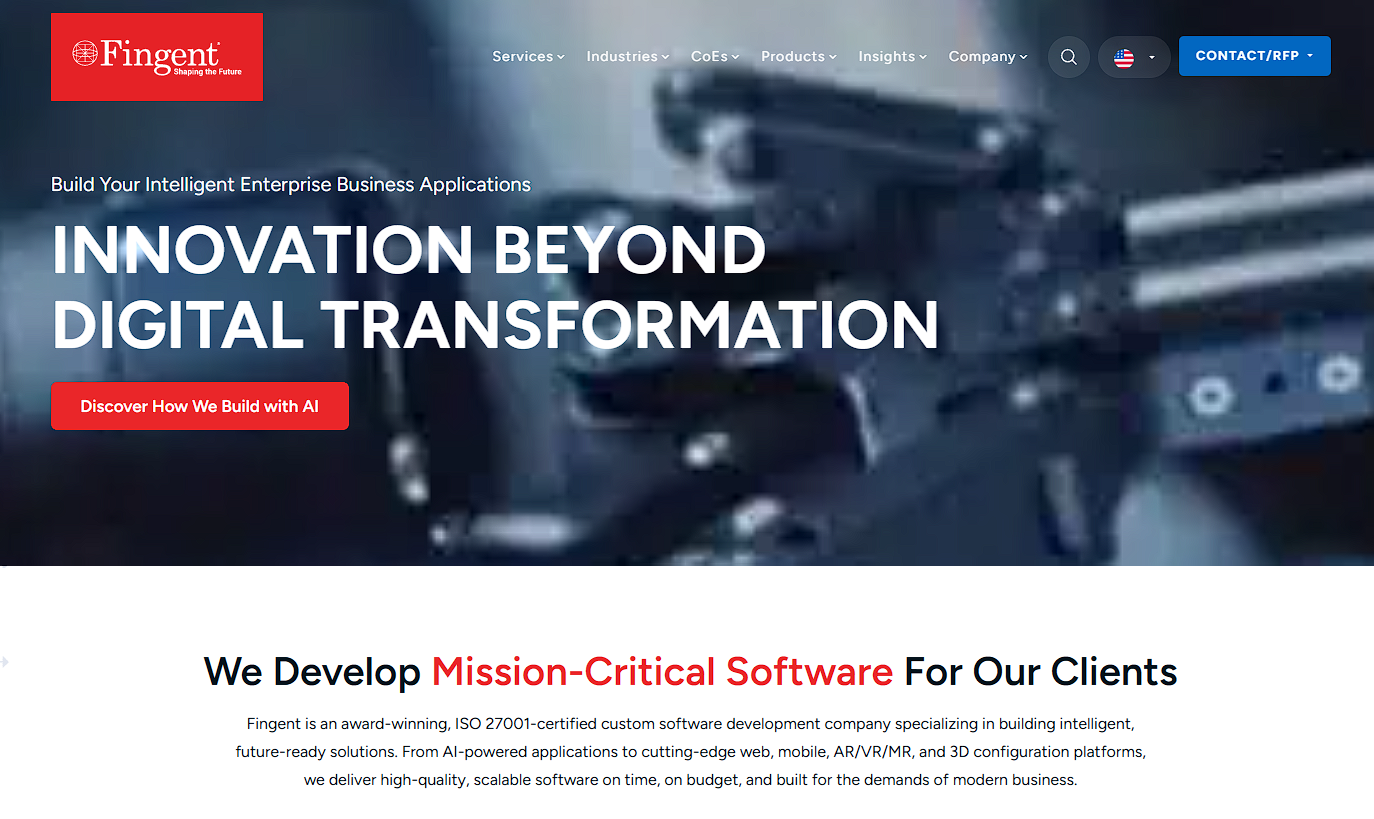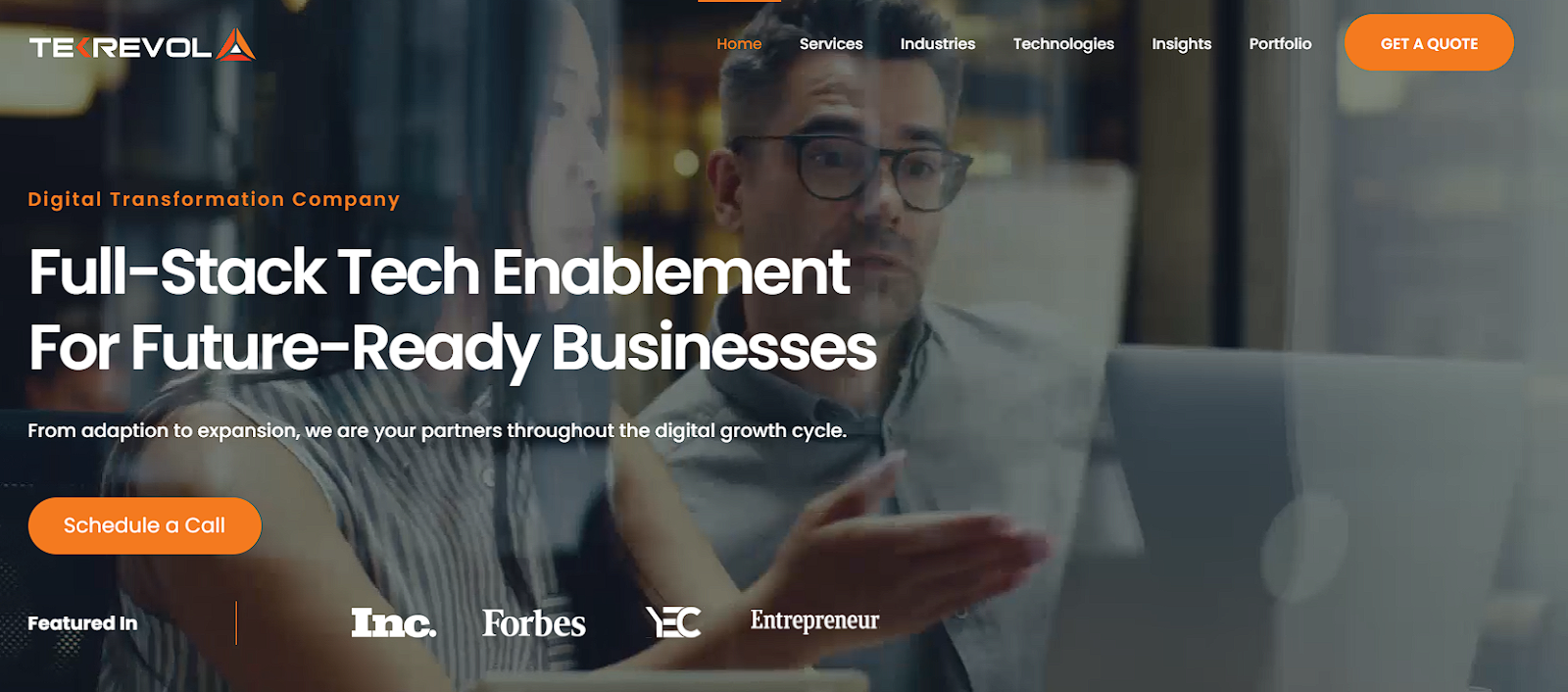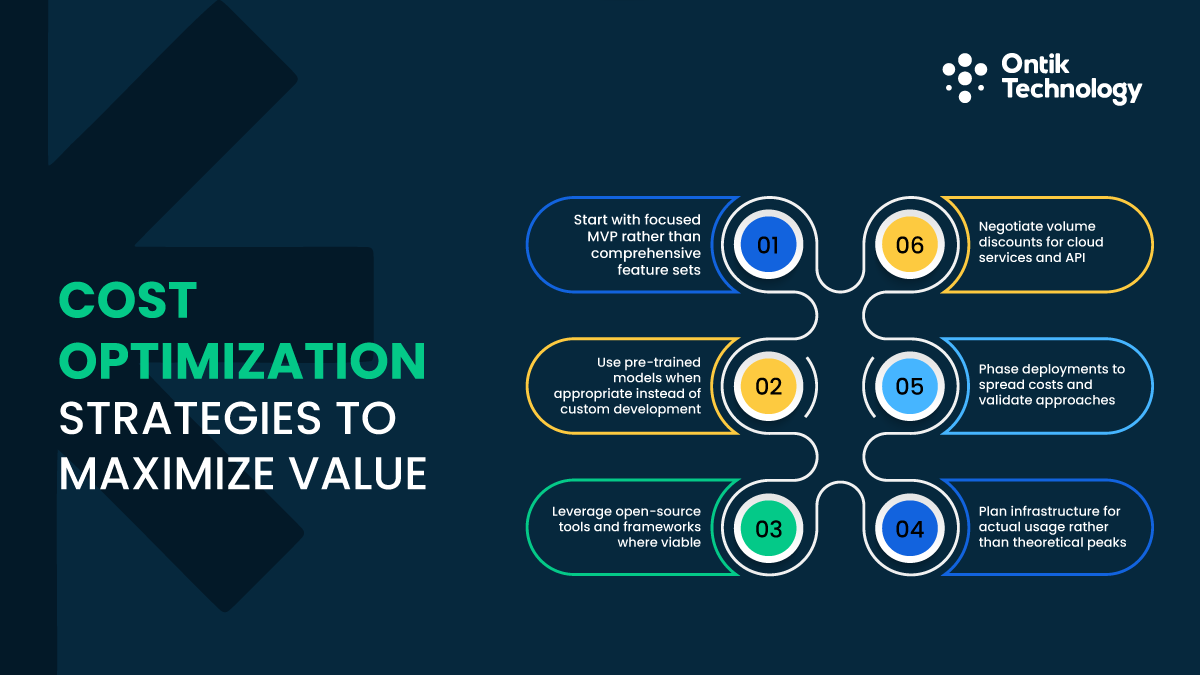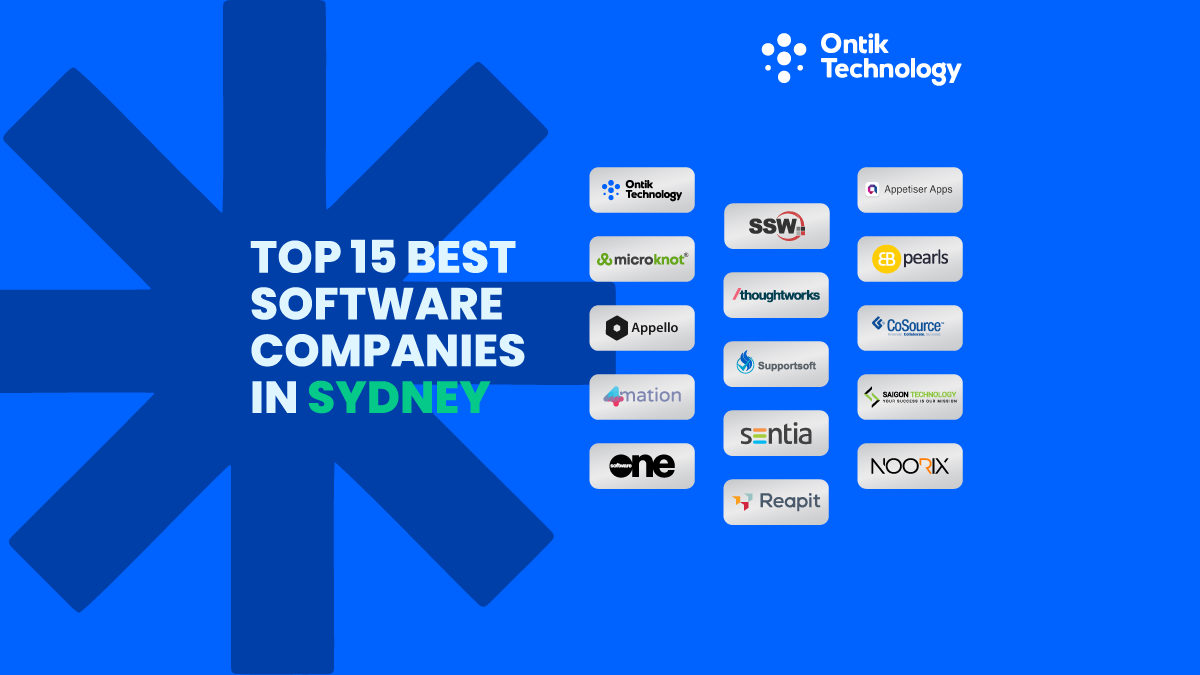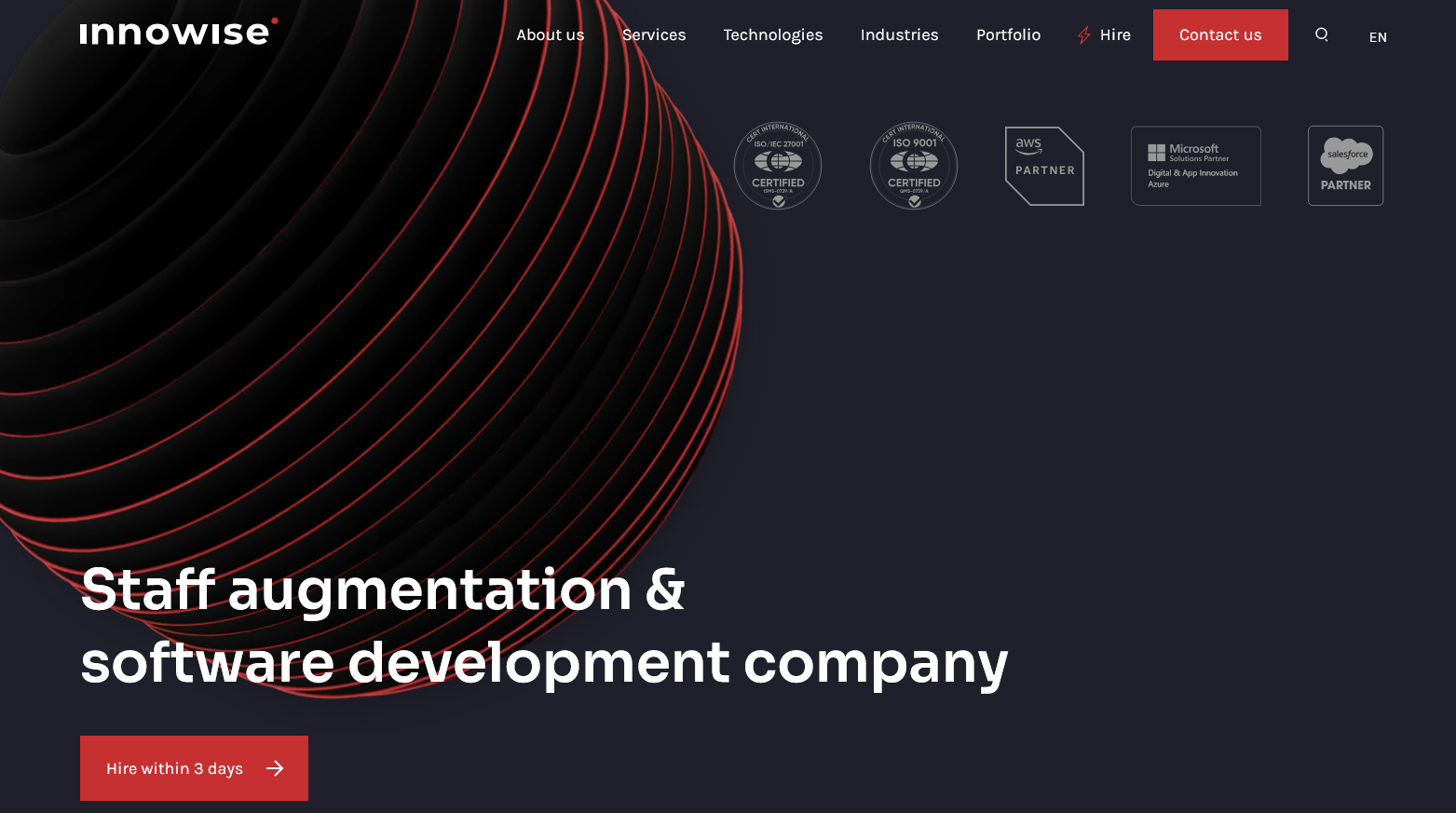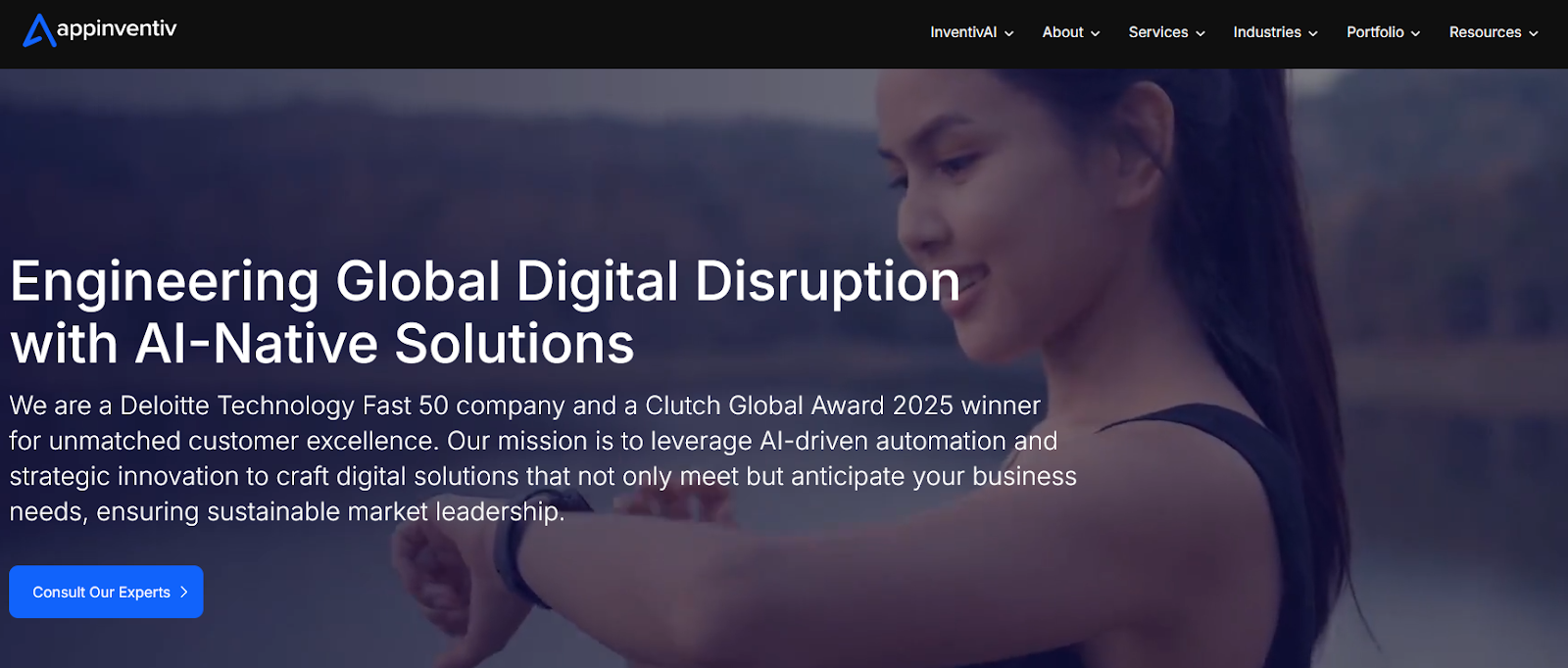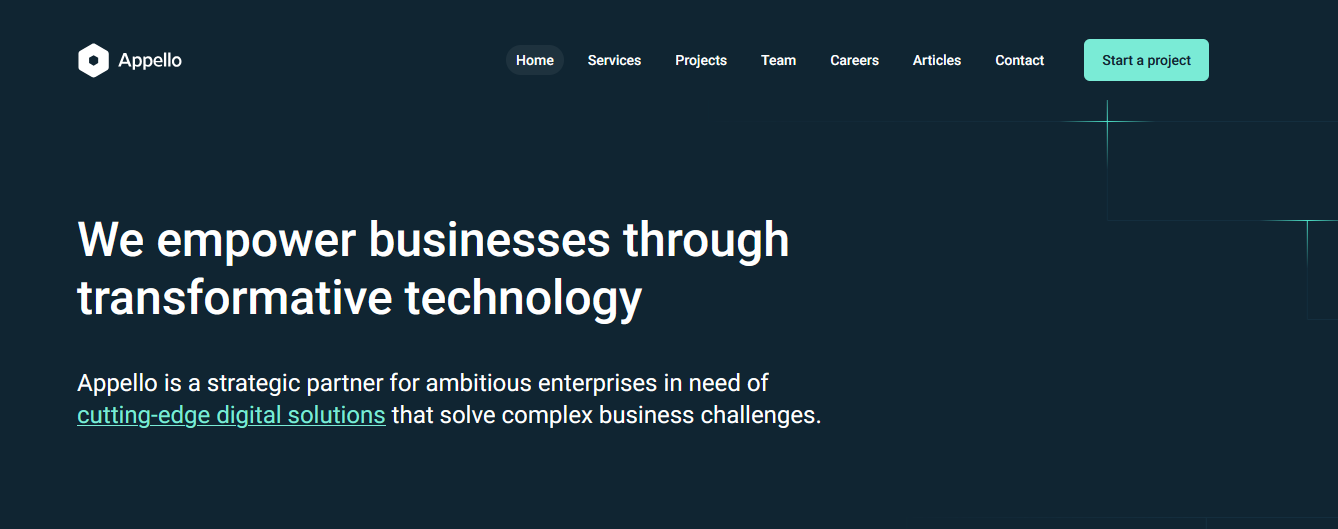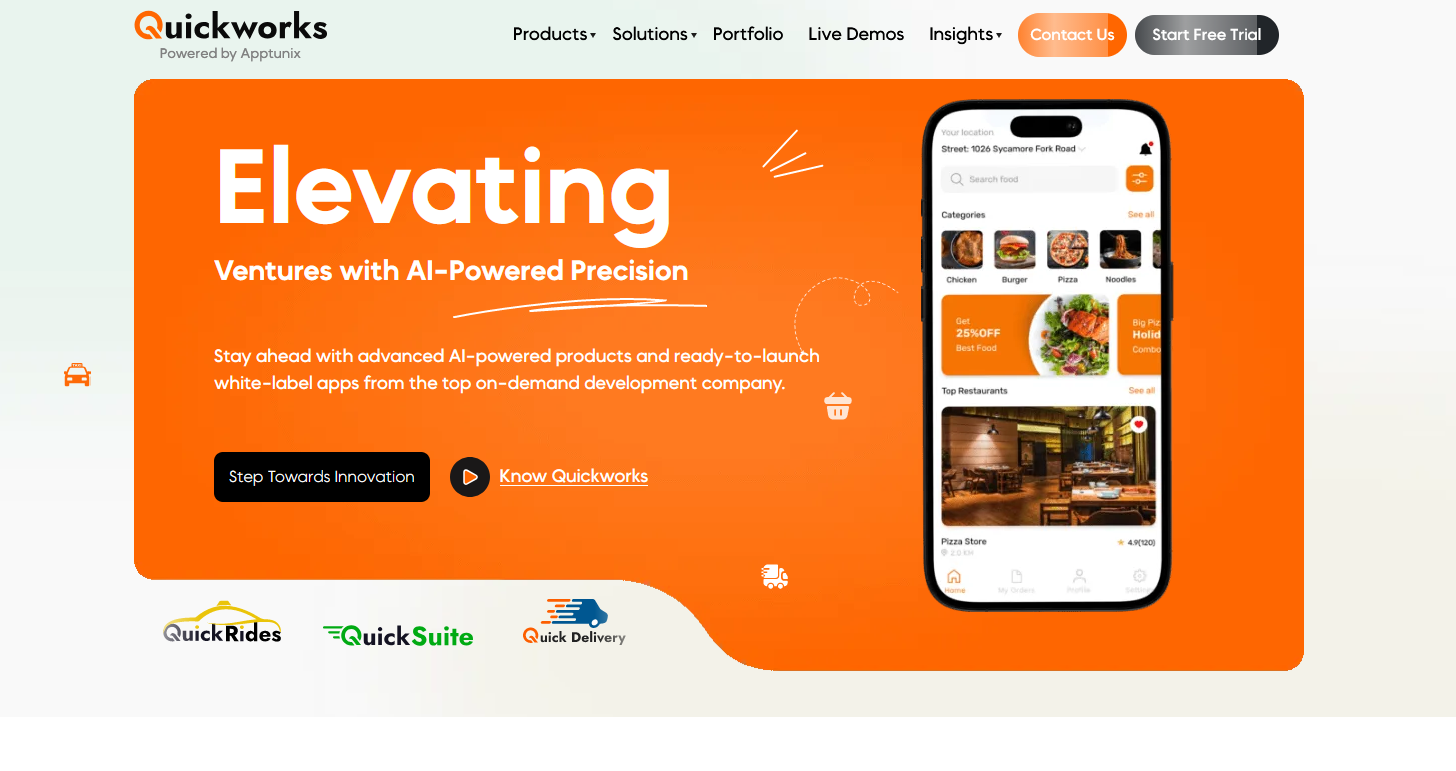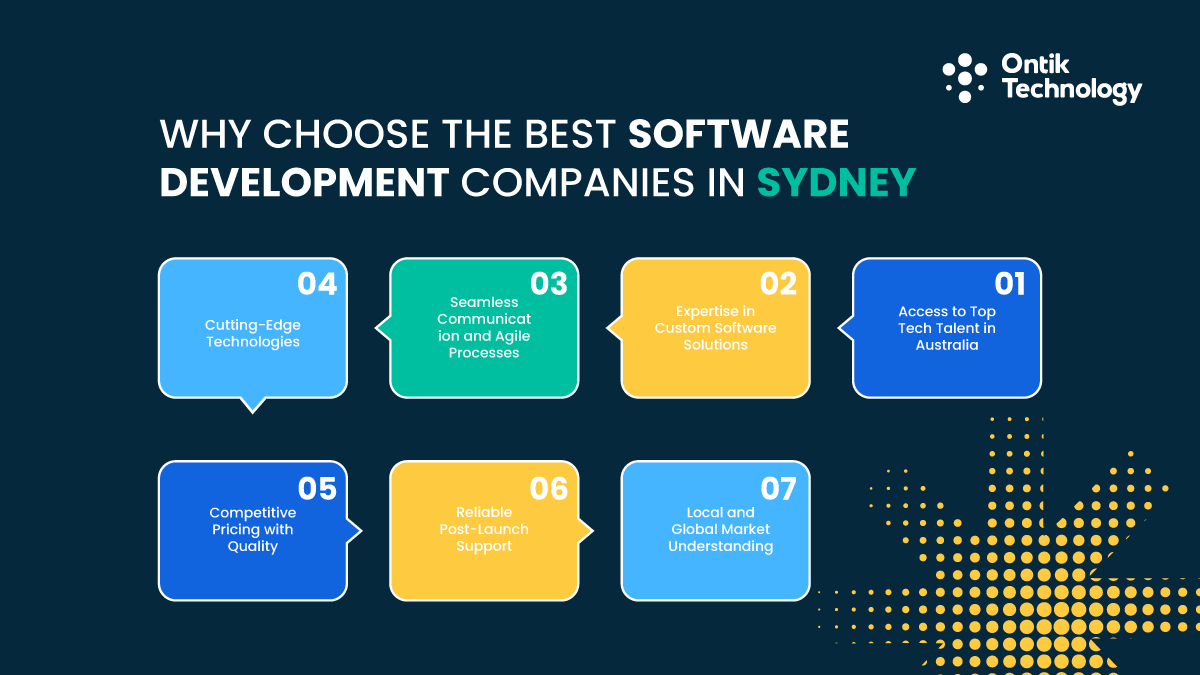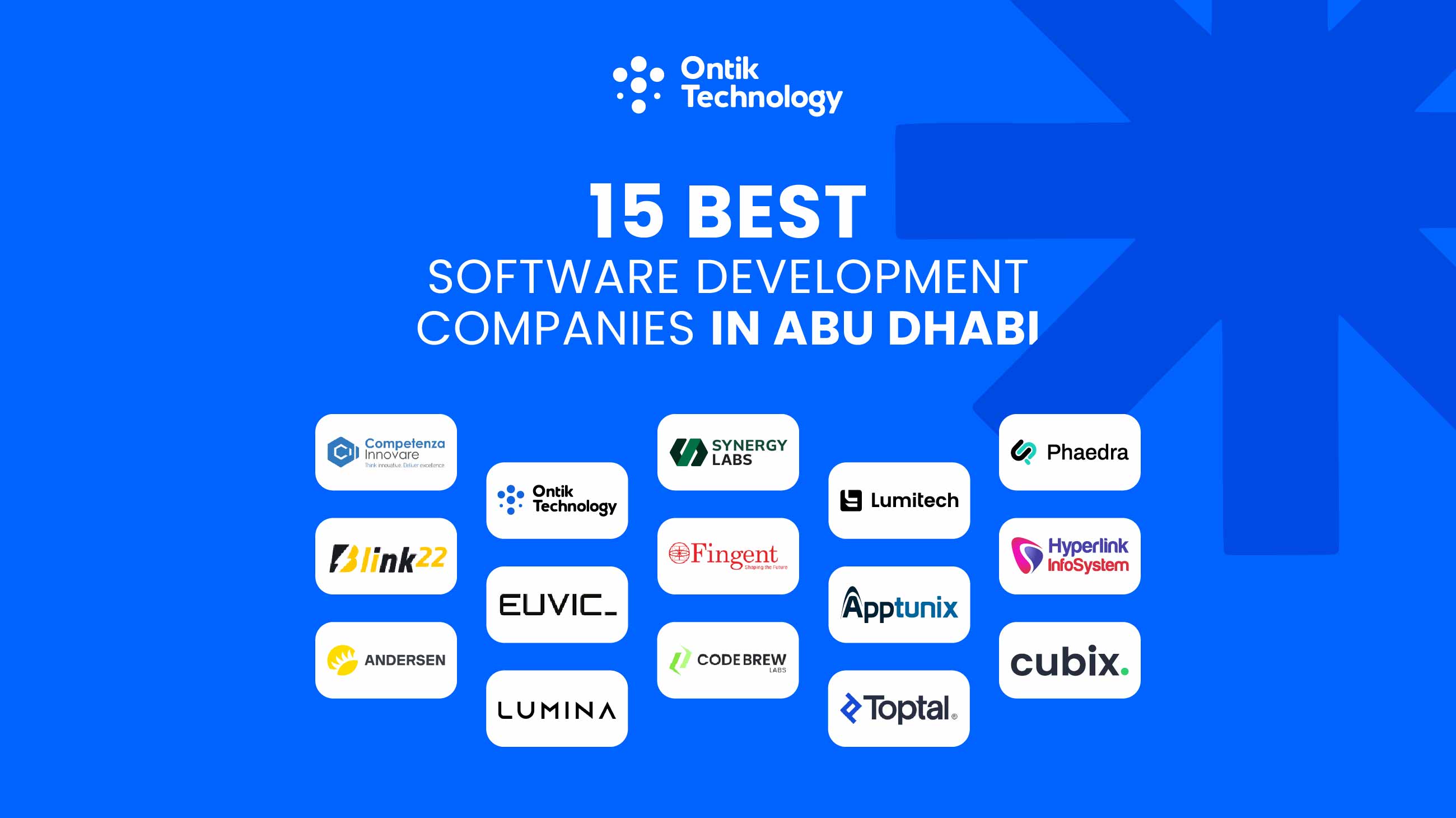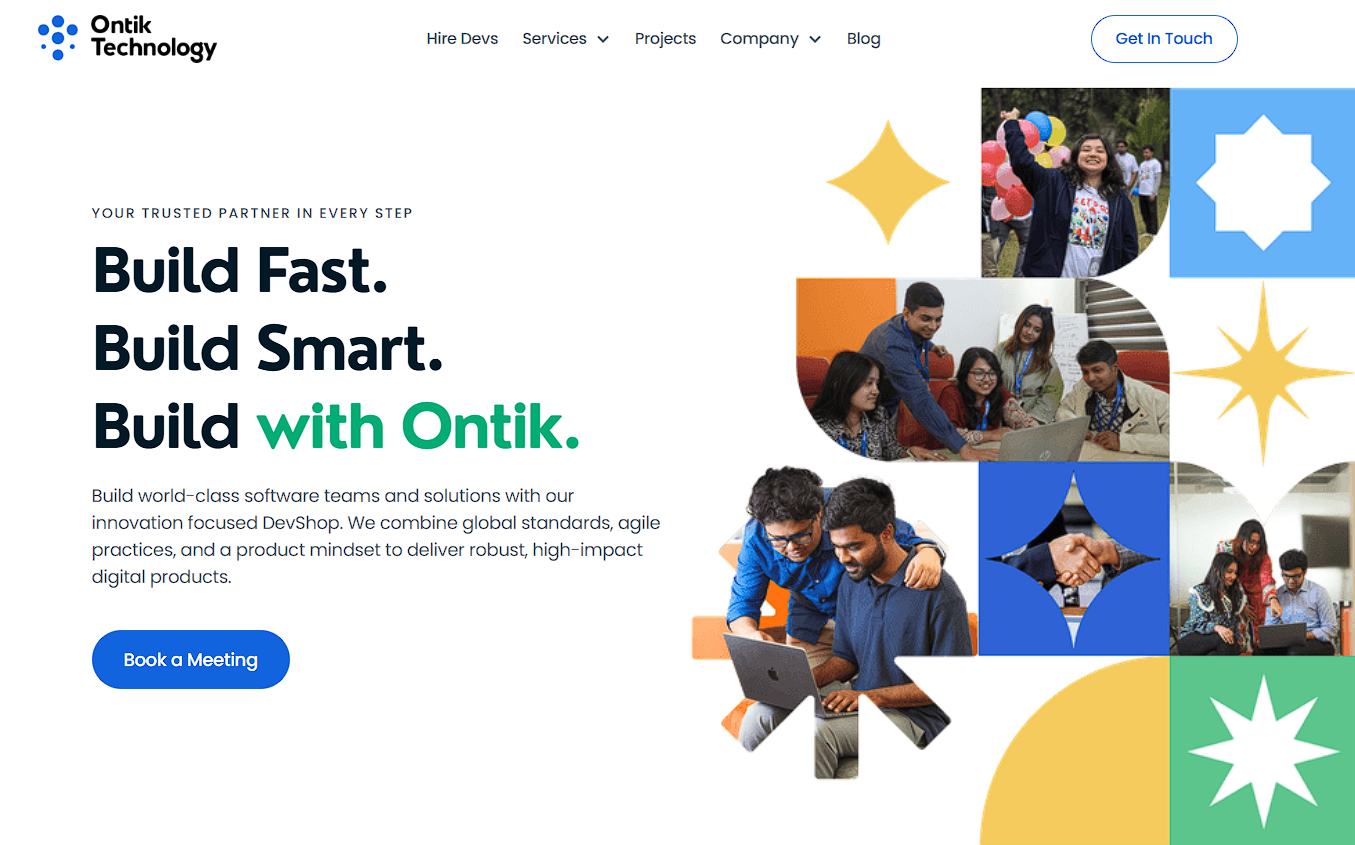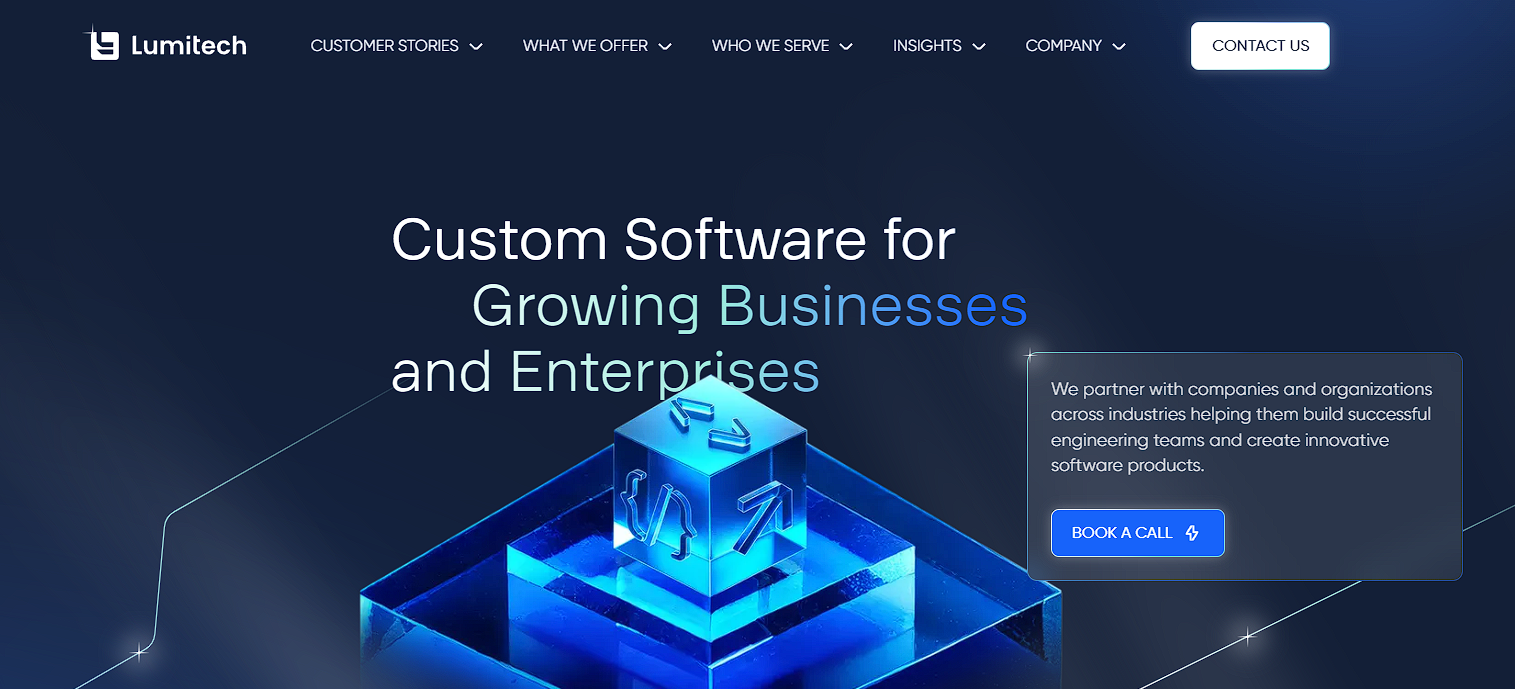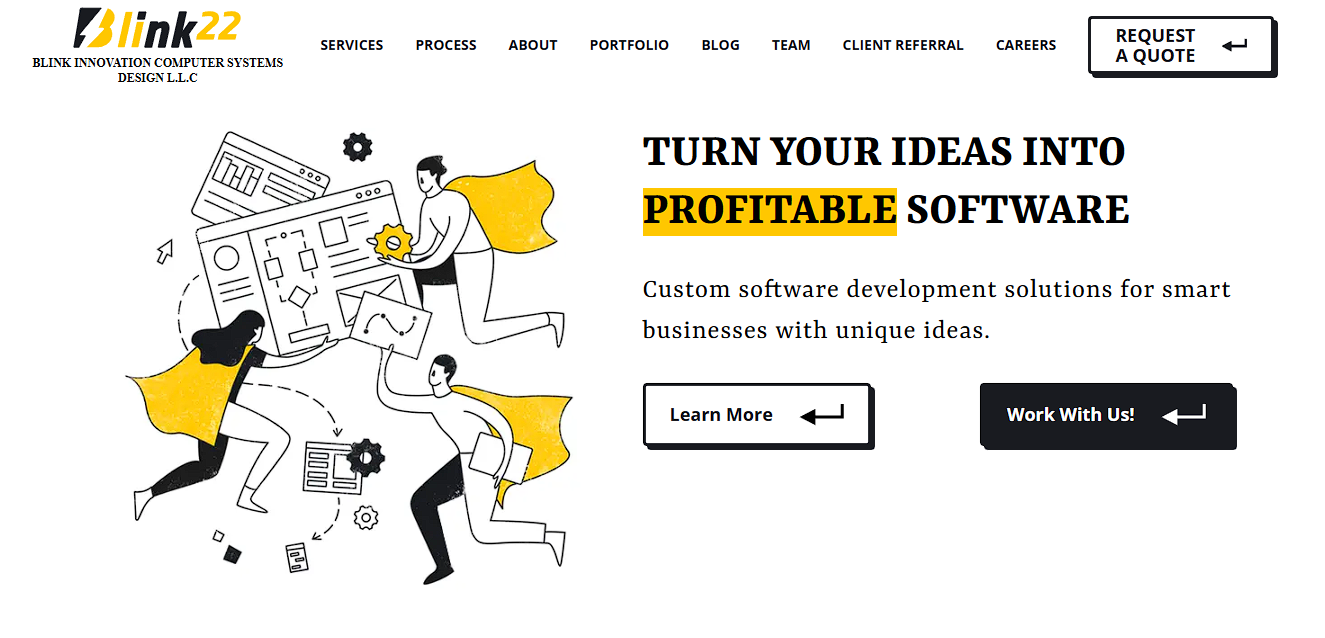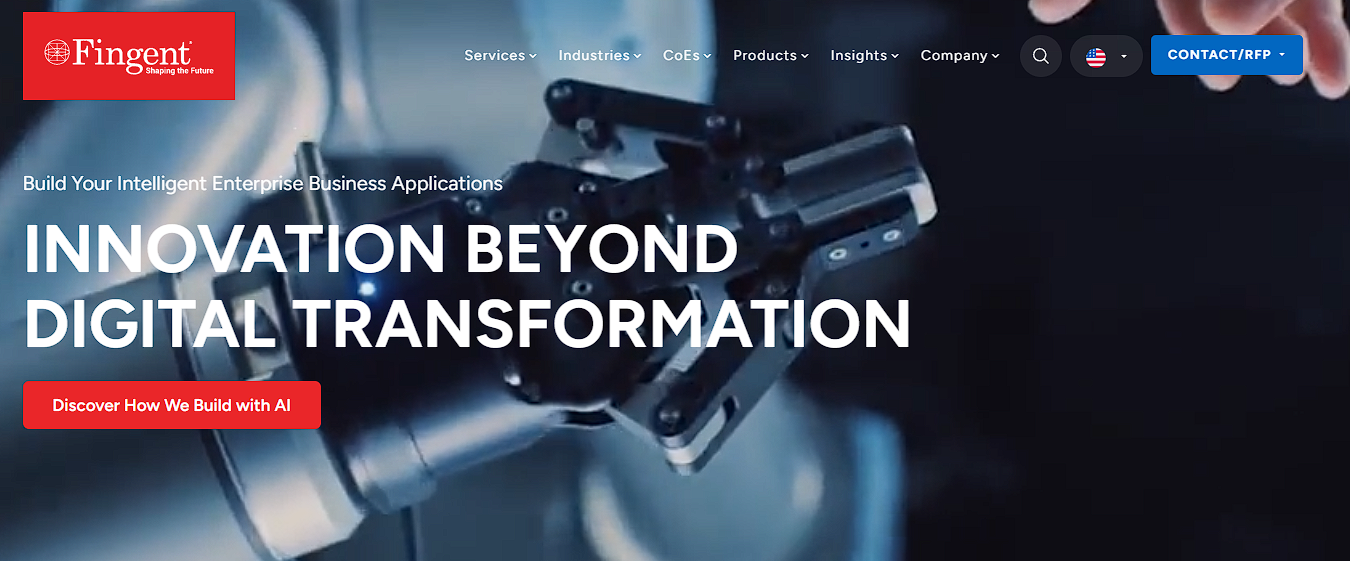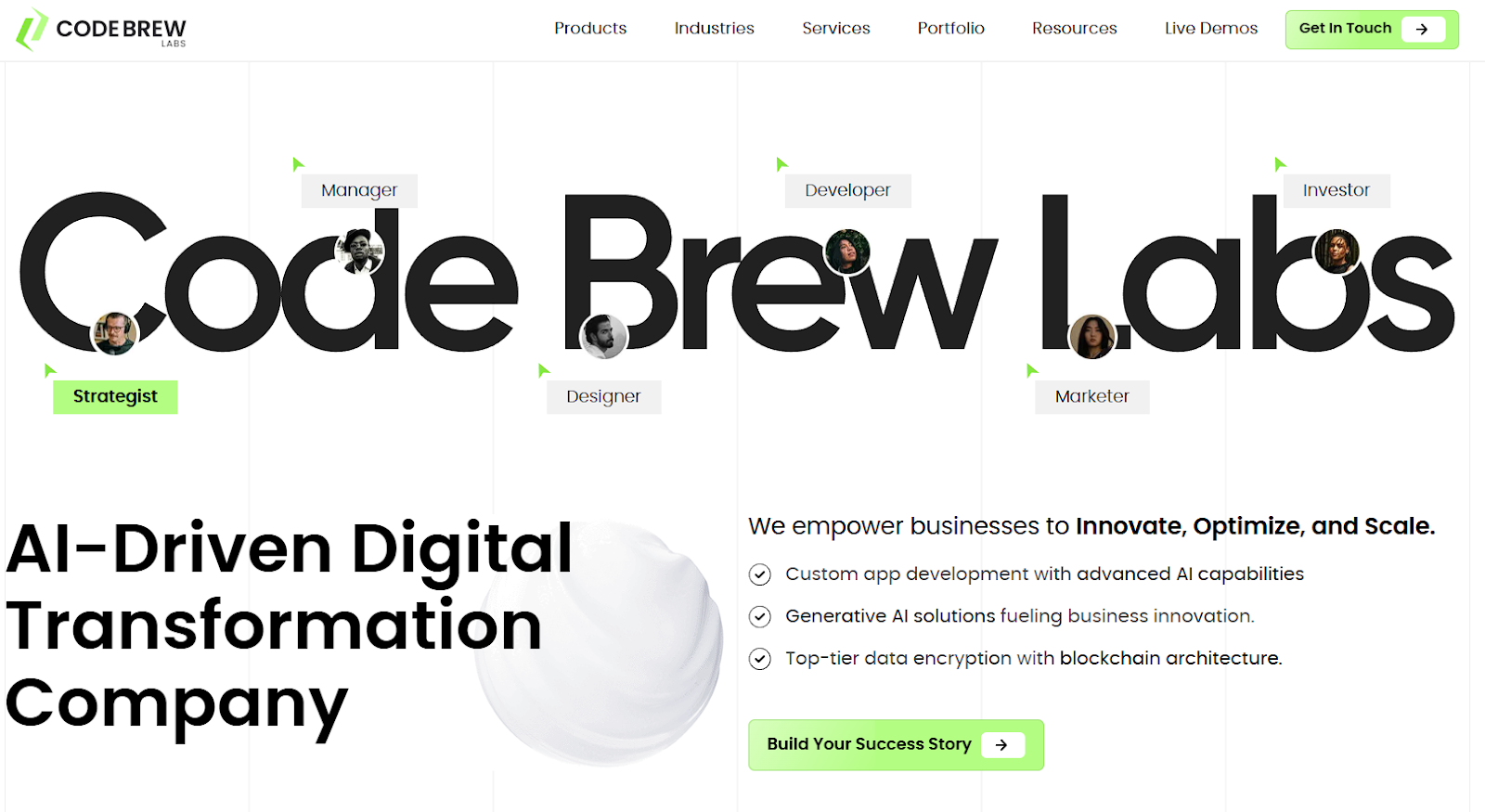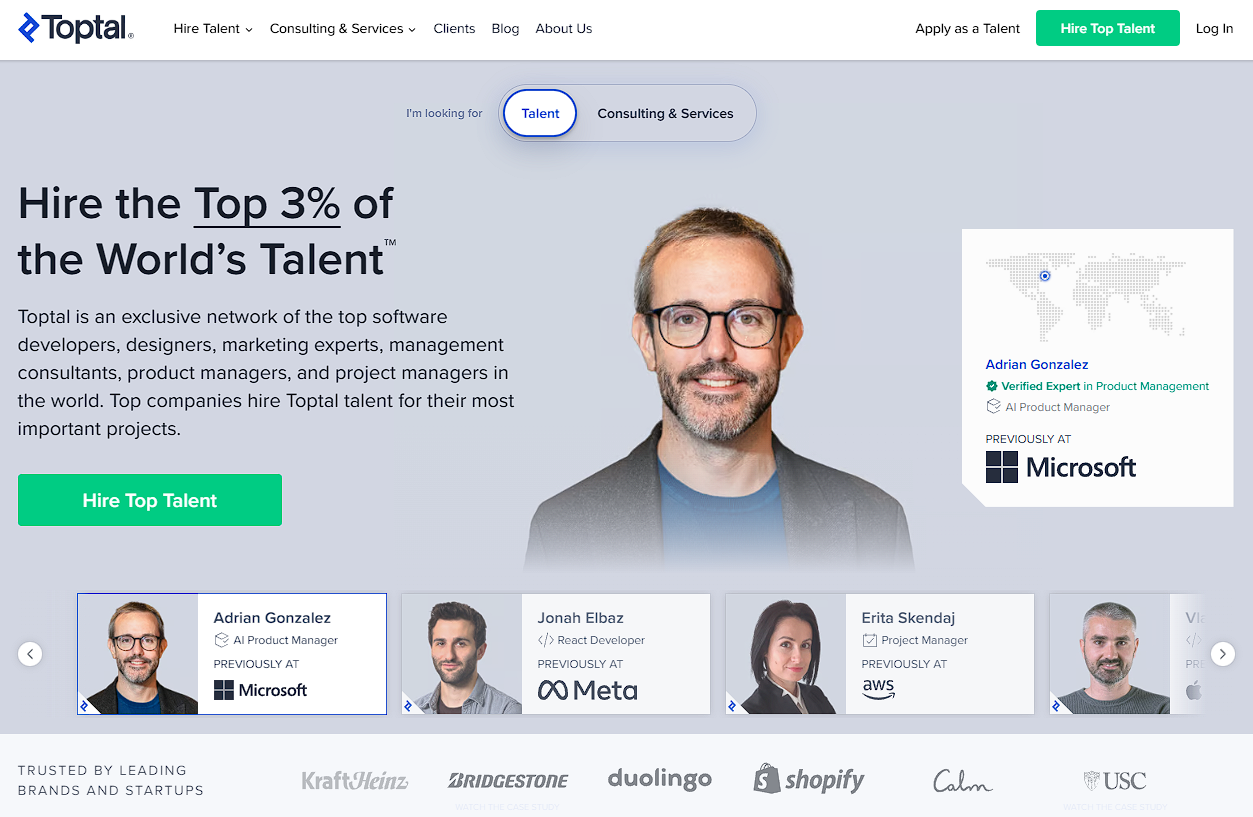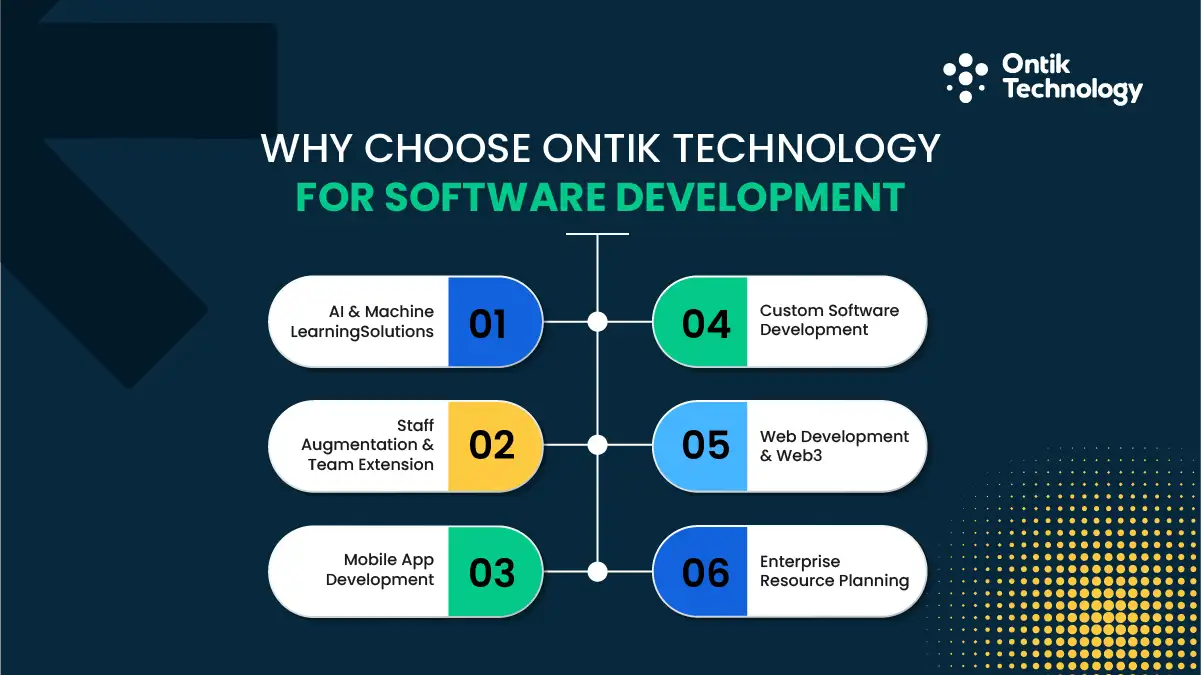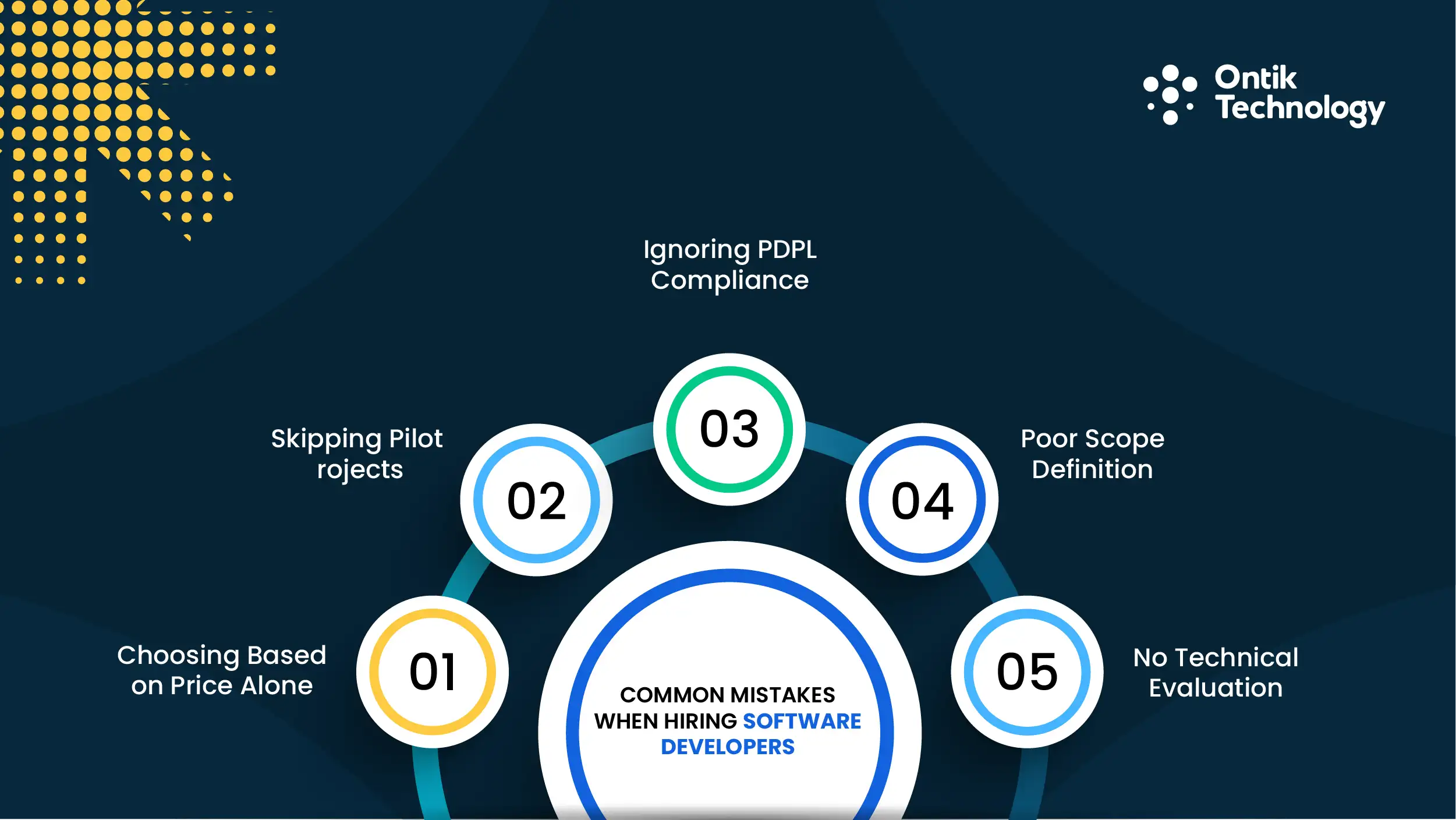Gain Insights Into Software Development for Startups (2025)
If you're a young company eager to launch your products or services, investing in software development is your game-changer! For startups, software development isn't just about writing code. It's about creating a digital masterpiece that connects with your users, grows effortlessly, and lasts. Developing software as a service (SaaS) can rapidly expand your market reach and significantly grow your customer base. It also helps you to secure a strong position in the competitive market.
Software development for a startup is all about staying flexible and moving step by step. The main goal is to create a Minimum Viable Product (MVP) that solves a real market problem and helps the business grow quickly. The global market for custom software development was around USD 43.16 billion in 2024, and it’s on track to shoot up to USD 146.18 billion by 2030. That’s a huge jump, moving at a CAGR of 22.6% from 2025 to 2030.
Custom software is not one-size-fits-all, it’s built to match exact needs. Whether for a single person or a whole company, it shape tools and apps around real problems, not the other way around. However, finding the right software development strategy and partner can be daunting for new companies. This article taps into everything you need to know about navigating software development as a startup.
Why Do Startups Need to Speed Up Software Development?

At Ontik Technology, we know how crucial it is for startups to develop software quickly. Doing so helps them compete better, make money sooner, and keep customers happy. Let's explore why speeding up software development is essential for startups.
- Time to Market
Startups often operate in highly competitive markets. Faster development allows them to bring their products or services to market quickly, gaining an early mover advantage and capturing market share before competitors.
- Early Revenue Generation
Startups often find it hard to make a profit early on. However, launching good software sooner allows startups to start generating revenue earlier. They can use the money they earn to improve their products, grow their business, and reach more customers. This helps them succeed in the long run.
- Improved Customer Experience
New companies can use software to enhance customer experiences by offering personalized interactions. This boost satisfaction and loyalty. Tools like customer service software, such as chatbots, ensure support is available 24/7, improving overall service accessibility.
- Cost Savings
Speeding up development can lead to cost savings. It reduces the time and resources spent on each iteration, minimizing operational expenses and allowing startups to allocate resources more efficiently.
- Efficiency and Resource Optimization
Faster development cycles mean using resources more efficiently. Startups often operate with limited budgets and manpower. So, optimizing development time allows them to achieve more with less.
- Attracting Investment
Investors often look for startups that can demonstrate rapid progress and growth potential. Speedy development cycles demonstrate agility and responsiveness, which can make a startup more attractive to potential investors.
Want to speed up your startup's software development? Partner with a professional startup development company like Ontik Technology. We'll help you save time and money, improve customer satisfaction, and attract investors for long-term success.
Top 10 Steps in the Startup Software Development Process

Software Development Process for Startups: Starting a new startup feels exciting, but turning an idea into a working product need clear process. Software development for startups is not about big plans, it’s about moving step by step and staying flexible.
First, you find the right problem, then build simple mockups, quick prototypes, and product notes that show how the idea can grow into real app or platform. Money always tight, deadlines always short, and market never 100% clear. That’s why having process matter — it keep team focused, cut waste, and bring real results.
If you want to build your product without burning budget, you can reach out to top software development companies for startups who know how to balance cost, speed, and quality. As a startup, it's normal to feel worried. However, having a clear understanding of software development can help you achieve your business goals more easily. Here are 10 simple steps shared by Ontik Technology’s expert software developers:
Step 1: Idea Generation
Begin software development by brainstorming with your team. Record all ideas, no matter how small. Analyze the market and perform a SWOT analysis to understand your competition. This provides a clearer path forward to generate a unique idea for your software.
Step 2: Concept Validation
Validate your idea with partners, investors, and stakeholders. Develop a clear product concept, outlining your business plan and potential competitors. Sometimes, you may need to create a minimum viable product (MVP) to demonstrate the feasibility of your idea and attract funding.
Step 3: Design the Product
Design the software by combining ideas and the business plan. Create wireframes and prototypes to visualize the product. This helps the development team understand how the software should function. It also ensures everyone is on the same page before building begins.
Step 4: Develop Your Software
Choose the technology stack and start building the product. The development team works on creating the software from scratch or improving the MVP. This stage involves writing code, developing features, and integrating various components to build a functional product.
Step 5: Quality Assurance
Test the software continuously throughout development. Identify and fix bugs and issues early. Regular testing ensures the product is of high quality and meets user expectations. This stage is crucial for delivering a reliable and effective software product.
Step 6: Implementation of Changes
Make changes based on test feedback. Fix issues before adding new features. This iterative process helps improve the software continuously, ensuring it meets the required standards and functions smoothly. Implementation of changes keeps the product evolving and improving.
Step 7: Product Deployment
Review the product and prepare for deployment. Decide whether to deploy on the cloud or on-premises. This stage involves setting up the environment, ensuring the software is ready for users, and addressing any final adjustments before the official launch.
Step 8: Market Introduction
Launch the product to your target audience. Collect feedback from users. Use a beta version to understand user reactions and make necessary adjustments. This helps refine the product and ensures it meets market demands before the full release.
Step 9: Revenue Strategy
Plan how to generate revenue from your product. Options include subscriptions, in-app purchases, ads, and partnerships. Choose a strategy that aligns with your marketing plan and maximizes profit while ensuring a positive user experience. Balancing revenue generation with user satisfaction is key.
Step 10: Post-Launch Activities
And here comes the final step, continue improving the product based on user feedback. Monitor market acceptance and make updates and patches as needed. Post-launch activities ensure the software remains relevant, functional, and competitive in the market. Keeping the product updated and addressing user needs is crucial for long-term success.
By following these simple steps, your startup can effectively navigate the software development process. You can ensure a successful product launch and sustainable growth.
Which Software Development Services are Suitable for Startups to Outsource?
Here I will share about the top 10 services that a startup can outsource easily. Ready to know more in detail? Keep scrolling down:
Software Development Services for Startups:
- Website and Mobile App Development
Outsourcing mobile app or web development can be very helpful for startups. They often can't afford to hire full-time developers, so outsourcing lets them use specialized skills without spending too much money. This also helps them launch their products or services faster. At Ontik you can also hire remote developers for your software products.
When it comes to UI/UX design, outsourcing ensures startups can create interfaces that are easy to use and look great. Professional designers bring skills in user research, making prototypes, and testing usability. This means the final product meets what users want and keeps them engaged.
- Custom Software Development
Custom software development for startups is another area startups often outsource. It's a way to get solutions that fit their specific business needs perfectly. This can help improve how efficient they are, how easily they can grow, and how well they compete in their industry.
- Cloud Services
Cloud services are also commonly outsourced by startups. This lets them use scalable infrastructure and storage solutions without paying upfront for their own data centers. They can adjust how much they use based on their needs, which saves money and makes it easier to adapt quickly.
- DevOps
DevOps teams handle integrating development and operations, which speeds up how fast software gets made and improves its quality. Outsourcing this means startups get better teamwork, faster product releases, and more reliable software thanks to automated testing and updates.
- Quality Assurance and Testing
Quality assurance (QA) and testing services are outsourced to catch problems with software before it's released. This keeps product quality high, reduces issues later, and makes customers happier.
- API Integration
API integration is outsourced to connect applications with other services smoothly. This makes it easier to add new features and make products work better for users.
- Maintenance and Support
Maintenance and support teams provide ongoing help for startup apps. Outsourcing this keeps everything running smoothly, fixes problems fast, and lets the startup focus on its main work without distractions.
- Data Analytics and BI
Business Intelligence analytics help startups understand their data better. This means they can make smarter decisions, improve how they work, and find new chances to grow. And you can get this amazing service at Ontik easily.
- Cybersecurity Services
Cybersecurity services are outsourced to protect startup data and systems from hackers. Outsourced experts set up strong security, check for problems regularly, and make sure the startup follows the rules. This keeps everything safe and makes customers trust the startup more.
If you have a startup and need expert skills to develop your software product, outsourcing is a great option. Look no further than Ontik Technology for access to these services..
Software development life cycle for startups
Startups don’t got years to waste, they move fast. Unlike big enterprise with slow process, here the journey stay flexible, quick, and always changing with user feedback.
1. Idea and check
You don’t start with code, you start with people. Who you build for? what pain they got? Do small research, peek at competitors, talk with few real users. If people nod yes, then you know idea got legs.
2. Make MVP first
Don’t try to build full product day one. Just create Minimum Viable Product — the tiny version with only core features. This help you launch fast, save money, and hear from users before you burn big budget.
3. Prototype and design
Draw it out, wireframe it, make simple mockup. Keep design easy, clean, no heavy stuff. People love smooth tap, clear buttons, no headache. First look matter, first use matter more.
4. Go agile way
Work in small sprint, two week, three week, ship something, then improve. Scrum, Kanban, whatever style fit. This let team adapt quick and user feedback come alive in product faster.
5. Build lean team
Don’t need army of devs. Need smart, hungry team who wear many hats. Some startups hire outside help, some mix in-house with outsource. Keep team light but sharp, like swiss knife.
6. Test and repeat
Check your app again and again. Catch bug early, fix quick. Launch, hear user voice, tweak again. Every test make product smoother, every feedback push it forward.
7. Scale and keep alive
When people love it, you scale it. Add cloud, add strong security, add more features. Growth bring new demand, so keep team ready for upgrade. Launch is not finish, it’s just start of long run.
SDLC Models of a Software Development Process Best Fitted for Startups
For startups, choosing the right Software Development Life Cycle (SDLC) model is essential for efficient development, quick iterations, and rapid product deployment. Here are some SDLC models that are well-suited for startups:
- Agile Model
The Agile development model is a way of developing software in small, quick steps called iterations. Teams work closely together, constantly improving the product based on user feedback. For startups, Agile helps by allowing flexibility, speeding up product launches, and quickly adapting to changes. It ensures the product meets customer needs and market demands. At the same time, this model makes it easier for startups to deliver updates often and grow their business efficiently.
- Prototyping Model
In prototyping model, you build initial models of the product to test ideas and gather feedback early. It helps clarify requirements, reduce risks, and ensure the final product meets user needs effectively.By creating these early prototypes, startups can identify and address challenges sooner. It leads them to get a more refined and successful end product that aligns closely with user expectations.
- Iterative Model
In the Iterative Model, startups develop the product in stages, refining it with each iteration. Each version is refined based on feedback and testing. For startups, this approach reduces risks by catching issues early and allows gradual enhancements. It ensures the product evolves with user needs, leading to a more user-friendly final product. This method is great for startups aiming for steady and continuous improvement.
- RAD Model
The RAD (Rapid Application Development) model is an SDLC approach focusing on quick prototyping and iterative releases. It focuses on making simple versions of the product first, getting feedback from users, and then improving it step by step. For startups, this means they can create and adjust their products quickly based on what customers want. It helps them save time, money and ensures the final product is exactly what users need. RAD is all about being fast and flexible.
- Waterfall Model
Ever seen the flow of water in the waterfall? Isn't that beautiful This model works by maintaining a nice flow just like that. The Waterfall Model is a simple and popular way to create software. It follows a clear step-by-step process, where each phase must be completed before the next one starts. This model is best for projects with clear goals and little change.
Water model follow the steps below:
Requirements: Gather all the project needs
Design: Plan how the software will work
Implementation: Write the code
Testing: Find and fix bugs
Deployment: Release the software to users
Maintenance: Update and improve the software as needed
- V-Model
The V model is an extension of the Waterfall model and is structured in a V-shape. ensures a systematic approach to software development and testing, promoting quality throughout the lifecycle. The V Model is best suited for projects with well-defined requirements and low uncertaint such as industries like aerospace, automotive, and healthcare.
Check out the steps of this model here:

Incremental Model
The Incremental Model is a software development approach where the project is divided into small parts or increments. Each increment builds on the previous one and adds more functionality until the complete software is ready. In this model, Users get early versions of the software more quickly. At the same time, it’s easier to adapt to new requirements or changes in later increments.
Steps in the Incremental Model:

Spiral Model
The Spiral Model is a software development approach that combines iterative development with risk management. It is structured in a spiral shape, with each loop representing a phase of development, focusing on refining and improving the software through repeated cycles.
Benefits of Startup Software Product Development
In the fast-paced world of startups, staying ahead is important. And custom software development plays a key role in keeping pace with the world. Here are several benefits to consider:
Efficient Development Workflow
Custom software helps teams work better together. Using agile methods, they can quickly adapt to changes, focus on important tasks, and complete projects on time.
Budget-Friendly Solutions
Custom software can often be more cost-effective in the long run. By focusing on essential features that directly address business needs, startups avoid the expenses associated with unnecessary functionalities in off-the-shelf solutions.
Long-term Cost Efficiency
While custom software may have higher initial costs, it is often cheaper over time. Startups avoid frequent updates and licensing fees, leading to savings.
Minimizing Resource Waste
Custom solutions prevent wasting resources on unneeded features. Startups develop exactly what they need, ensuring every part of the software serves a purpose.
Faster Time to Market
With custom development, startups can launch products quickly. By focusing on essential features first, they gain market presence and user feedback sooner.
Market Validation Through User Feedback
Custom software allows startups to gather user feedback during development. This helps improve the product based on real experiences, reducing the chance of failure.
Agility and Flexibility
Custom software enables quick changes when needed. Startups can adapt features easily, responding to new trends or customer needs without being limited by other solutions.
Improved User Satisfaction
Tailored software meets specific user needs, leading to happier customers. This satisfaction can increase loyalty and encourage positive reviews, boosting the startup's reputation.
Strategic Market Positioning
Custom solutions can set startups apart from competitors. Unique features help attract customers and fill gaps in the market, enhancing the startup’s position.
So, making your own software can really give your startup a boost. It helps you do things your way, grow smart, and stay competitive in your industry.
Mistakes to Avoid When Building Startup Software Solution
Building startup software requires careful planning to avoid common pitfalls. From market research and MVP development for startups, each step is crucial for success. Here are key mistakes to avoid when creating software for your startup.
- Skipping Market Research: The most common mistake that startups make is skipping market research. Before starting, make sure to understand your customers and their needs. Without this research, you might create a product that people don't really want.
- Over-Engineering: Users typically take time to get used to using new software. So, don't try to make your product too complicated right away. Start with basic features that solve important problems. You can add more features later based on what users actually need.
- Ignoring MVP Principles: Another mistake that can cause you great loss is ignoring MVP principles. Focus on building a simple version of your product first. This helps you launch quickly and learn from real user feedback before investing too much time or money.
- Lack of User Testing: Test your product with real users early and often. This helps you understand what works and what needs improvement, ensuring your product meets user needs.
- Underestimating Budget and Time: Ignoring budgeting and timelines can lead to various consequences. Financially, it may result in overspending or running out of funds unexpectedly. Be realistic about how much money and time you'll need.
Startups often need more resources than expected to develop, market, and maintain their products.
- Ignoring Feedback: Ignoring software feedback can lead to several negative outcomes for startups. By disregarding user input, the product may fail to address critical issues or meet customer expectations. So, pay attention to what users say about your product. Their feedback can help you make it better and more appealing to potential customers.
- Poor Team Dynamics: Without clear communication and shared goals, team conflicts can arise, leading to misunderstandings, missed deadlines, and decreased productivity. Work well together as a team. Clear communication and shared goals are important for staying on track and keeping everyone motivated.
- Ignoring Legal and Compliance Issues: Failure to comply with laws and regulations can result in legal fines, lawsuits, or even the shutdown of your startup. It damages your reputation. Understand and follow laws and regulations that apply to your product. Ignoring them can lead to legal problems that hurt your business.
- Focusing Solely on Technology: Remember that business strategy and understanding your market are just as important as the software development and technology itself. Don't overlook marketing and how you'll attract customers.
By steering clear of these pitfalls, you can enhance your software's chances of meeting market needs. Remember, continuous improvement and adaptation based on user insights are essential for any software development company for startups.
Top 10 Strategies for Startup Software Development to Boost Business Value
Developing software as a startup requires strategic planning and execution. Ontik Technology offers essential strategies for successful startup software development. Explore these proven approaches below:
- Identify a Niche or Problem: Choose a specific area where your software can provide value. Conduct thorough market research to understand what potential users need most.
- Use Agile Methods: Develop your software in small steps using agile practices. This lets you adjust quickly based on feedback and changes.
- Start with Basic Features: Launch a simple version of your software with the most important features. This lets you test your idea and get feedback from users.
- Focus on User Experience: Make sure your software is easy to use and solves the user's problem well. A good design makes a big difference.
- Business Plan for Growth: Design your software so it can handle more users and features as your business grows.
- Keep Improving: Regularly update your software based on feedback from users and new technology. This keeps your product competitive.
- Market Wisely: Develop a solid plan to reach your target customers. Engage with users early and build a community around your product.
- Build Partnerships: Work with other businesses or influencers who can help promote your software. Partnerships can speed up your growth.
- Ensure Security and Compliance: Make sure your software is safe and follows the rules (like protecting user data). This builds trust with users and avoids problems.
- Manage Finances Well: Be smart about money. Consider how much it costs to develop your software, how to price it, and how you'll make money from it.
These strategies can help tech startups navigate the challenges of software development more effectively. So, stay adaptable, listen to users, and evolve your product to meet market demands effectively.
How Much Does It Cost to Build a SAAS Platform
For startups diving into SaaS platform development, keeping costs in check is key, especially with limited resources. Creating a basic SaaS MVP (Minimum Viable Product) can cost between $50,000 to $100,000 for startups. Total costs depend on how many features you want and how complex you want your product to be.
Total Estimated Cost
- Basic SaaS Platform: $71,000
- Complex SaaS Platform: $310,000
Key expenses include planning, design, development, testing, deployment, marketing and ongoing support.
Thus, the professional SaaS developers or a top SAAS development company at Ontik Technology recommend that you share your requirements, expectations, and the features you want for your SaaS product. They will then advise you on how much budget you may need to allocate.
How to Select a SaaS Development Agency for Startup Journey?
Selecting a SaaS development agency requires careful consideration to ensure the success of your project. So, I have shared some secret tips for selecting a software development outsourcing companies. Find them below:
- Define Your Project Requirements: Clearly outline what you need in terms of functionality, scalability, and technology.
- Review Portfolios and Case Studies: Assess their past projects to see if they have experience in similar industries or technologies.
- Check Client Testimonials and Reviews: Look for feedback from previous clients to gauge their reputation and reliability.
- Evaluate Technical Expertise: Ensure they have the skills and knowledge to develop a robust and secure SaaS solution.
- Assess Communication and Project Management: Verify their communication style and responsiveness, crucial for effective project collaboration.
- Consider Scalability and Future Support: Ensure they can handle your growth plans and provide ongoing support post-launch.
- Compare Pricing and Contract Terms: Align their pricing structure and contract terms with your budget and project timeline requirements.
By following these best practices, you can make a more informed decision when selecting a SaaS development agency that best fits your needs. For those looking to save time and find a reliable option swiftly, Ontik Technology stands out as an excellent choice.
SaaS Product Development Process to Boost Startup Growth
Developing a SaaS product follows a structured process to ensure success. Understanding SaaS fundamentals and this process helps businesses deliver innovative ideas and solutions effectively. Let's explore SaaS and its development process.
What is SaaS?
SaaS, or Software as a Service, means using software that's hosted online. Instead of downloading and installing it on your computer, you access it through the internet. You pay a subscription fee to use the software, and the provider takes care of updates, security, and maintenance. It's like renting software instead of buying it. Examples include web-based email services, online document editors, and customer management tools. You can easily develop strong SaaS product by partnering with software development companies for startups.
Key Steps of SaaS Development
Developing a SaaS (Software as a Service) product involves several key steps to ensure a successful launch and ongoing operation:
- Define your product idea and identify the problem it solves.
- Validate the need and demand through market research.
- Outline requirements, features, and functionalities based on research.
- Create a roadmap and project plan for development.
- Design intuitive UI/UX with wireframes and prototypes.
- Develop backend, databases, APIs, and frontend components.
- Test thoroughly for bugs, functionality, and security.
- Deploy the product and monitor performance.
- Release to users, gather feedback, and iterate.
- Provide ongoing maintenance, updates, and support.
How Can Ontik Technology Help in Software Development for Startups?
In the fast-paced world of software development, using new technologies and methods is important for working well and doing things quickly. Ontik Technology is a leader in this area, providing smart solutions and helping to make development smoother and better.
How Can Ontik Technology Help in Software Development for Startups?
- Turn ideas into MVPs – We shape your concept into a working Minimum Viable Product fast, so you test market before burning budget.
- Design that users love – Clean, simple, human-first UI/UX that make your app easy to use and hard to forget.
- Agile build process – We run quick sprints, release often, and keep you in loop, so product grows step by step.
- Dedicated dev team – Our skilled people join as your own crew, handling code, design, and testing with full focus.
- Staff augmentation – Need extra hands? We drop in the right talent fast, so your timeline never slow down.
- Scale with confidence – From cloud to security, we prepare your product to handle growth and future updates without breaking.
Here is how Ontik Technology can assist startups in software development:
- Offering expertise in choosing the right technologies and frameworks
- Providing tools and frameworks to build software faster
- Offering cost-effective solutions tailored to startup budgets
- Ensuring software is secure and works smoothly
- Supporting ongoing maintenance and updates
- Personalized services to meet your needs
There are tailor-made engagement Models that you can choose to develop your software efficiently.
- Dedicated Development Team
- Team Augmentation
- MVP Development Service
- Integrated Business Automation
- Custom Software Development
Final Thoughts
In sum, Ontik Technology supports in outsourcing software development for startups, handles challenges, speeds up development. Software Development Process for Startups: New startups bring exciting opportunities. But to develop concepts, they also require an organized approach. A valid process to transform them into products that meet user needs. If you are starting a software company, first identify and prioritize critical tasks. Such as creating mockups, prototypes, and product specifications.
A startup owner should be aware of its major challenges. Like budget constraints and tight deadlines, along with uncertain markets. A well-defined step-by-step approach will ensure that you can overcome these obstacles and bring positive results. And to achieve that, the optimal option is to contact top software development companies capable of developing your product at a lower cost.
So, if you want to boost software development for your startup business, contact us today!


